#mathilde in bavaria countess of trani
Explore tagged Tumblr posts
Note
Who from the Wittelsbach siblings do you think had the happiest marriage and who do you think had the unhappiest marriage, in your opinion?
I think Karl Theodor & Maria Josepha had the most happy marriage, while the least happy marriage was a tie between Maria Sophie & Francesco and Mathilde Ludovika & Louis.
Hello! Sorry for the wait. Although I can’t help but find the seventeen years age gap between Karl Theodor and Marie José icky, it does seem they were happy together. Out of all the siblings they seem to have had the most functional marriage for sure. Karl Theodor also had a good marriage with his first wife Sophie, though it was sadly a short one.
Helene and Louis both married for love to people beneath their status, though I can’t really say for sure how happy their marriages actually were. In Helene’s case simply because I haven’t found any sources that describe how her relationship with her husband Maximilian was, but given how deeply affected she was by his untimely death, I think it’s safe to assume it was a happy union.
In Louis’ case, we know that Elisabeth once told her lady-in-waiting that “It is a good thing that Henriette is his wife, for anybody else would long since have left him, and he is happy with her.” Valerie also wrote in her diary in 1884 that “Good Aunt Henriette is here and will stay until Saturday... When the attacking Uncle Louis isn’t around, Aunt is much more pleasant.” It seems that as he grew older Louis developed an erratic personality and was fit to burst of anger out of nowhere, which likely troubled his relationship with his family. I always trash Marie Larisch’s memoirs for being so unreliable, but I actually believe there is truth is this anecdote she recalls of going with her parents to the Opera in Vienna as a teenager:
during the ent’racte I whispered to papa that I should like something to eat. But I was not prepared for the wrath which followed this simple request. “Another word and I will box your ears,” he hissed. “How dare you be hungry at the Opera! And if you are, listen to the music and feed on its beauty.” I tried to follow his advice, but I felt really sinking, and although I adored the Opera, I was very glad to get back to Schönbrunn and supper.
I only can hope that these lapses in his personality didn’t occure too often.
My unpopular opinion is that I don’t think Marie and Francesco’s marriage was as miserable as it’s often assumed. While she did have a bad start with her husband, it seems that from 1868 (the year of their “reapprochment” aka when they started to sleep together regularly) onwards they had a good relationship. I just haven’t come across anything that really supports they didn’t get along in their old age. The only thing I’ve seen used as evidence of them being in “bad terms” is that Marie traveled alone often but so did Elisabeth, and no one argues that she and FJ hated each other because of that. Also Francesco II’s health was bad since the 1880s, so it’s not that weird that he couldn’t accompany his wife in her trips anymore (since he did travel with her to England in the 1870s).
Mathilde and Luigi were the most disfunctional marriage hands down, they had problems from the very beginning and their relationship only got worse as the years went by. They had been informaly engaged since Marie’s own marriage, and ok at the time it seem like a good idea to marry both sisters to the first and second in line of succession princes of a Catholic kingdom. But frankly they should’ve call it off after the Bourbons were deposed because the marriage promised no economic security to Mathilde, and even less personal happiness. Luigi got publicly drunk constantly, was unfaithful, and completely broke. On her older age Mathilde lived separated from her husband and after his death she had to depend on Elisabeth for support.
That being said, my answer to whom I think had the worst marriage is always going to be Sophie and Ferdinand d’Alençon, mainly because he had her locked up in a mental institution for months after she tried to divorce him. Which to me tops literally any other bad thing that anyone else on this post ever did to their spouse. But at the time everyone saw it as the right thing to do to “save” Sophie from herself, which is just sad.
Thank you for your question!
#fun fact it seems marie's husband francesco was the one who introduced karl theodor and marie josé?#i recall reading they met at his place#karl theodor duke in bavaria#maria josé of braganza duchess in bavaria#duke ludwig wilhelm in bavaria#henriette mendel baroness wallersee#helene in bavaria hereditary princess of thurn und taxis#maximilia hereditary prince of thurn und taxis#queen marie sophie of the two sicilies#francesco ii of the two sicilies#mathilde in bavaria countess of trani#luigi of bourbon-two sicilies count of trani#sophie in bavaria duchesse d'aleçon#ferdinand d'orleans duke of alençon#asks
14 notes
·
View notes
Text
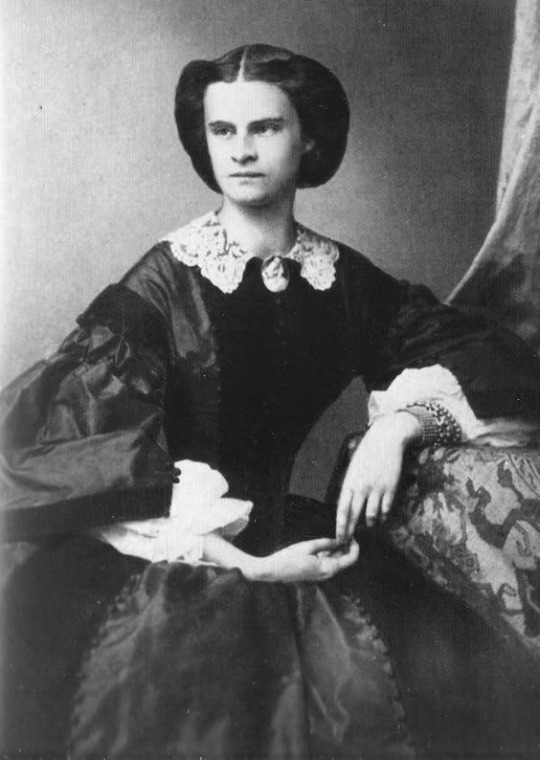
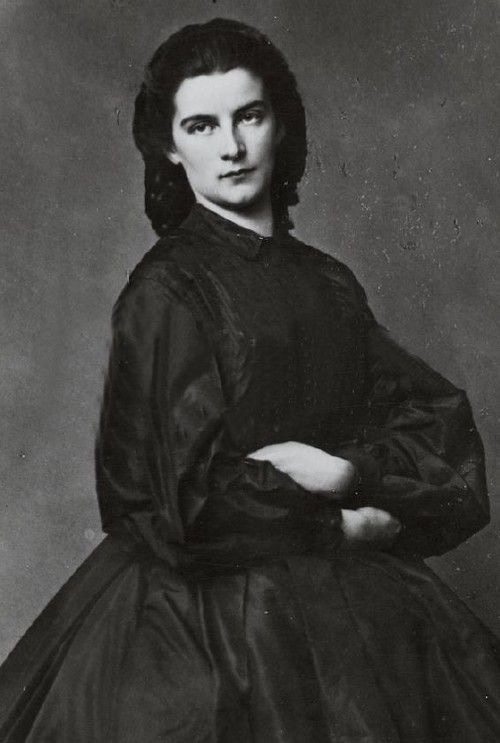
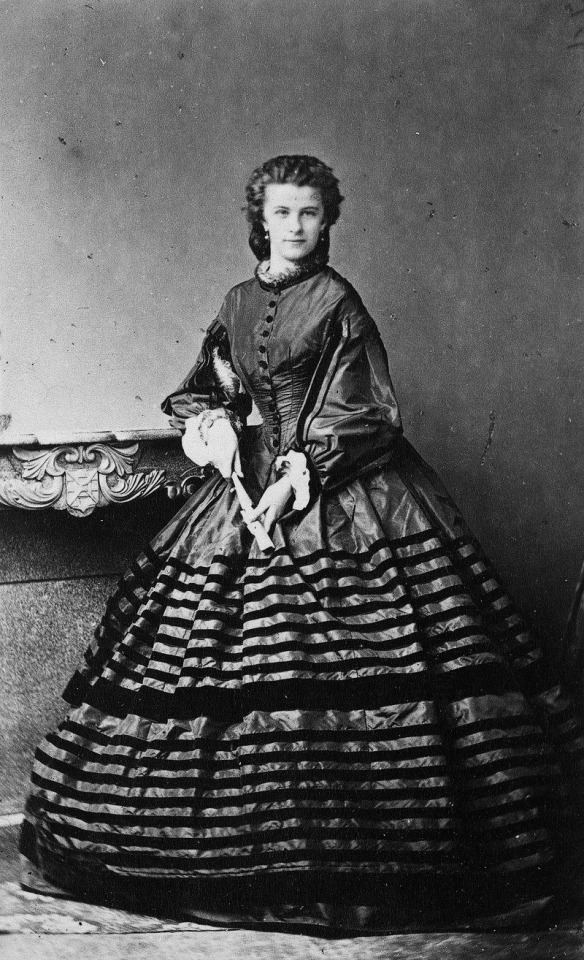
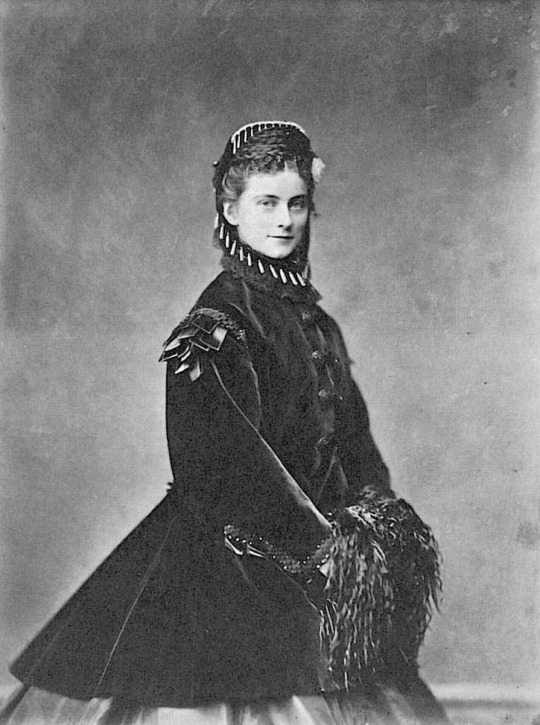
The four sisters of Elisabeth (left to right) :
Helene Caroline Therese, Duchess in Bavaria then Hereditary Princess of Thurn and Taxis. (1834-1890)
Marie Sophie Amélie, Duchess in Bavaria, Duchess of Calabre then Queen Consort of the Two-Sicilies. (1841-1925)
Mathilde Ludovika, Countess of Trani. (1843-1925)
Sophie Charlotte Auguste, Duchess in Bavaria then Duchess of Alençon. (1847-1897)
#Marie-Sophie in Bavaria#Helene in Bavaria#Mathilde in Bavaria#Sophie-Charlotte in Bavaria#old photographs#portraits#sisters#sisterhood
14 notes
·
View notes
Photo
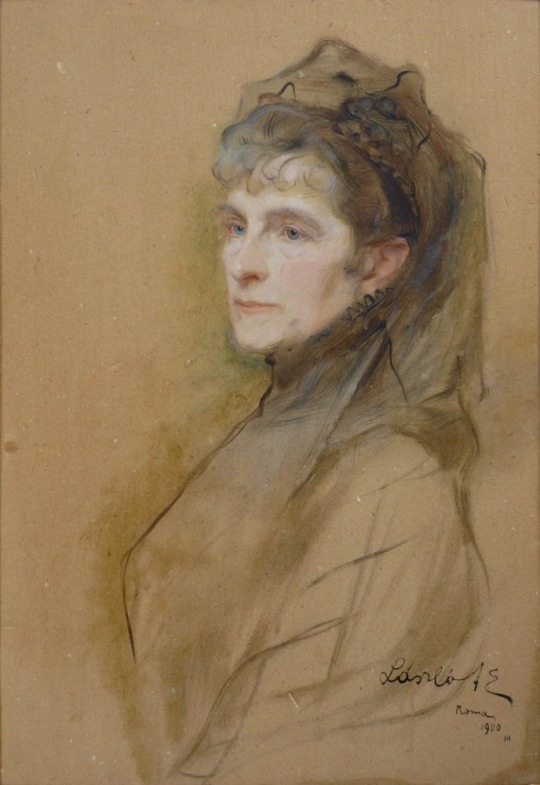
To H.R.H. Countess Caserta I was beholden for the pleasure of an acquaintance, one of the most interesting of all those whom I made in Cannes, with that royal Lady of Sorrows, Countess de Trani, sister of the ill-fated empress of Austria, and mother of the invalid princess of Hohenzollern, upon whom she was in loving attendance at the Hotel Calfornie in close vicinity to Chateau St. Michel. I suppose no one could have a more dramatic history than hers, one fuller of heart-breaking bereavments – and yet she was a lesson of noble resignation to the will of God, of heroic cheerfulness to all who came within the radius of her presence. A familiar sight in our bowery roads on the Calfornie hill was her tall, swiftly moving figure, so strongly resembling that of the empress of Austria, walking beside the invalid chair of Princess Hohenzollern, whose wit and spirit and vigorous young womanhood were doomed to an early ending in the following year. The death of this lady was so close for Countess Trani a cruel category of sorrows. The sudden violent death of her husband, Count Louis de Trani, the tragic breaking of the engagement of her younger sister with Ludwig, the mad king of Bavaria; the frightful fate of the same sister, who, as Duchesse d'Alencon, was burned up in the fire at the Charity Bazaar in Paris; the execution of her close kinsman, Maximilian, emperor of Mexico; the madness of his wife Carlotta; the calamitous death of her nephew, Prince Rudolph of Austria, and, darkest tragedy of all, the assassination of her beloved and radiant sister, the Austrian empress, made up her litany of woes, soon to come to a climax in the loss of her only child.
Recollections Grave and Gay, Mrs. Burton Harrison, 1911
#Princess Mathilde of Bavaria#Mathilde Countess de Trani#wittelsbach#Princess Maria Theresa of Hohenzollern#1910s
32 notes
·
View notes
Photo

Mathilde Ludovika, Duchess in Bavaria.
#Countess of Trani#Mathilde Ludovika of bavaria#Mathilde Ludovika in Bavaria#House of Wittelsbach#wittelsbach#long live the queue
32 notes
·
View notes
Photo

Mathilde Ludovika of Bavaria, Countess of Trani (30 September 1843 - 18 June 1925)
#mathilde ludovika of bavaria#countess of trani#daughter of duke maximilian joseph in bavaria#wife of prince louis count of trani#history#women in history#19th century#20th century#vintage#antique
2 notes
·
View notes
Text
Master Post - Members by birth
Disclaimer: Houses that rule(d)/reside(d) in other countries but originally came from German and/or Austrian territories and/or are generally regarded as belonging to this cultural room are listed among the German & Austrian Houses.
German & Austrian Houses
House of Ascania
Princess Sophie of Anhalt-Zerbst aka Catherine the Great
House of Coburg (Cadet branch of the House of Wettin)
Princess Alice of the United Kingdom, The Grand Duchess of Hesse and by Rhine
Princess Antoinette of Saxe-Coburg-Saalfeld, Duchess of Württemberg
Princess Charlotte of Belgium, The Empress of Mexico, Archduchess of Austria
Princess Stéphanie of Belgium, Crown Princess of Austria, Hungary & Bohemia
Princess Victoria of Great Britain and Ireland, Princess Royal, The German Empress
Victoria of Saxe-Coburg-Saalfeld, The Princess of Leiningen, The Duchess of Kent
House of Griffin
Elizabeth of Pomerania, Holy Roman Empress
House of Habsburg
Archduchess Johanna of Austria, The Grand Duchess of Tuscany
Archduchess Maria Amalia of Austria, Holy Roman Empress, The Electress of Bavaria
Archduchess Maria Anna of Austria, Princess of Lorraine and Bar
Archduchess Maria Antonia of Austria, The Electress of Bavaria
Archduchess Maria Antonia “Marie Antoinette” of Austria, The Queen of France and Navarre
Archduchess Maria Leopoldine of Austria, The Empress of Brazil, Queen of Portugal & the Algarves
Maria Theresia, The Archduchess of Austria, Holy Roman Empress
Archduchess Sophie of Austria
House of Hanover (Cadet branch of the House of Welf)
Princess Sophia Dorothea of Hanover, The Queen in Prussia
Queen Victoria of the United Kingdom, Empress of India
House of Hesse
Princess Alix of Hesse and by Rhine, Empress Alexandra Feodorovna of Russia
Princess Elisabeth of Hesse and by Rhine, Grand Duchess Elizabeth Feodorovna of Russia
House of Hohenlohe-Langenburg
Princess Adelheid of Hohenlohe-Langenburg, The Duchess of Schleswig-Holstein
Princess Feodora of Hohenlohe-Langenburg, The Duchess of Saxe-Meiningen
House of Hohenstaufen
Elisabeth “Beatrix” of Swabia, The Queen of Castile, León & Galicia
Konstanze “Anna” of Hohenstaufen, The Empress of Nicaea
House of Hohenzollern
Princess Anna Amalia of Prussia
Princess Caroline of Ansbach, The Queen of Great Britain & Ireland, The Electress of Hanover
Princess Elisabeth of Brandenburg, The Duchess of Brunswick-Calenberg-Göttingen
Princess Luise of Prussia, Princess Radziwiłł
Princess Maria Eleonora of Brandenburg, The Queen of Sweden
Princess Marie of Prussia, The Queen of Bavaria
Princess Wilhelmine of Prussia, The Margravine of Brandenburg-Bayreuth
House of La Marck
Amalia of Cleves
Anne of Cleves, The Queen of England
Sybille of Cleves, The Electress of Saxony
House of Leiningen
Princess Feodora of Leiningen, The Princess of Hohenlohe-Langenburg
House of Liechtenstein
Princess Sophie of Liechtenstein, Countess Esterházy de Galantha
House of Mecklenburg
Charlotte of Mecklenburg-Strelitz, The Queen of Great Britain, Ireland & Hanover
Elisabeth of Mecklenburg-Schwerin, Princess of Brunswick-Lüneburg aka Grand Duchess Anna Leopoldovna of Russia
Friederike (Federica) of Mecklenburg-Strelitz, The Queen of Hanover
Louise of Mecklenburg-Strelitz, The Queen of Prussia
Therese of Mecklenburg-Strelitz, The Princess of Thurn and Taxis
House of Northeim
Richenza of Northeim, Holy Roman Empress
House of Oldenburg
Augusta Victoria of Schleswig-Holstein, German Empress
Princess Cecilie of Greece & Denmark, The Hereditary Grand Duchess of Hesse and by Rhine
House of Reuß
Princess Hermine Reuß of Greiz, “German Empress”
House of Thurn and Taxis
Princes Marie Auguste of Thurn and Taxis, Duchess of Württemberg
House of Welf
Adelaide of Burgundy, Holy Roman Empress, Queen of Italy
Princess Caroline of Brunswick-Wolfenbüttel, The Queen of the United Kingdom & Hanover
Elisabeth Christine of Brunswick-Wolfenbüttel, Holy Roman Empress
Elisabeth Christine of Brunswick-Wolfenbüttel-Bevern, The Queen in & of Prussia
Princess Juliane of Brunswick-Wolfenbüttel-Bevern, The Queen of Denmark and Norway
House of Wettin
Adelheid (Adelaide) of Saxe-Meiningen, The Queen of the United Kingdom and Hanover
Princess Augusta of Saxe-Weimar-Eisenach, German Empress
Princess Christina of Saxony, The Landgravine of Hesse
Princess Luise (Louise) of Saxe-Gotha-Altenburg, The Duchess of Saxe-Coburg-Saalfeld, The Countess of Pölzig and Beiersdorf
House of Wied-Neuwied
Princess Elisabeth of Wied, The Queen & Princess of Romania
House of Wittelsbach
Princess Alexandra of Bavaria
Princess Amalie Auguste of Bavaria, The Queen of Saxony
Eleonore Magdalene of Neuburg, Holy Roman Empress
Elisabeth “Sisi” in Bavaria, The Empress of Austria
Elisabeth (Isabeau) of Bavaria, The Queen of France
Princess Elisabeth Ludovika of Bavaria, The Queen of Prussia
Helene “Néné” in Bavaria, The Hereditary Princess of Thurn and Taxis
Princess Ludovika of Bavaria, The Duchess in Bavaria
Princess Maria Anna of Bavaria, The Archduchess of Inner Austria-Styria
Princess Maria Anna of Bavaria, The Queen of Saxony
Marie in Bavaria, The Queen of Two Sicilies
Baroness Marie Louise of Wallersee, Countess of Larisch
Mathilde in Bavaria, The Countess of Trani
Sophie in Bavaria, The Duchess of Alençon
Princess Sophie of Bavaria, Archduchess of Austria
House of Württemberg
Mary of Teck, The Queen of the United Kingdom & British Dominions, Empress of India
Princess Sophie of Württemberg, The Queen of the Netherlands
Minor Nobles
Anna Constantia of Brockdorff, The Imperial Countess of Cosel
Katharina von Bora, Mrs Martin Luther
Baroness Louise Lehzen
Baroness Marie “Mary” of Vetsera
Sophie Botta, The Dark Countess of Hildburghausen
Sophie of Pannwitz, Countess of Voß
Foreign Houses
House of Albret
Jeanne d’Albret, The Queen of Navarre, 1. The Duchess of Jülich-Cleves-Berg and 2. The Duchess of Vendôme
House of Aviz
Infanta Eleonor of Portugal, Holy Roman Empress
House of Bourbon
Princess Louise d’Orléans, Princess Alfons of Bavaria
Byzantine Imperial Family
Princess Eudokia Laskarina of Nicaea, The Hereditary Duchess of Austria
Irene of Byzantium, The Queen of the Germans, The Duchess of Swabia
Princess Theodora Angelina, The Duchess of Austria & Styria
Princess Theodora Komnene of Byzantium, The Duchess of Bavaria & Austria
Theophanu, Holy Roman Empress
House of Chotek
Countess Sophie Chotek of Chotkowa and Wognin, The Duchess of Hohenberg
House of Este
Maria Beatrice d’Este, The Duchess of Massa & Carrara, Archduchess of Austria
House of Jagiellon
Jadwiga (Hedwig) Jagiellon, The Electress of Brandenburg
House of Stuart
Elizabeth Stuart, The Queen of Bohemia & Electress Palatine
House of Trastámara
Queen Joanna “The Mad” of Castile, Léon & Aragon, The Duchess of Burgundy, Archduchess of Austria
House of Valois
Mary, The Duchess of Burgundy, Archduchess of Austria
Commoners
Fatima Kariman aka Maria Aurora (von) Spiegel
Helene Baltazzi, The Baroness of Vetsera
Louise Rump, Mrs Ebert
Margot Großmann, Mrs Sauerbruch
Maria Anna Mozart, The Imperial Baroness Berchthold
Maria “Mizzi” Kaspar
Ottilie Richter, Baroness of Faber
Sophie Scholl
36 notes
·
View notes
Note
Not buying into the romanticized version of him, but I'll buy the real Duke Max wasn't the biggest fan of court protocol or ceremonial pomp for a man born into his kind of station. There were five wedding and wondering if Duke Max walked his daughters down the aisle? Although seems one had two wedding since Maria Sophie had a proxy wedding at the Court Church of All Saints in the Munich Residence before leaving for Italy and Duke Max wasn't at the second/real one?
Hello! While we don't have accounts of all the weddings, I tried to do my best to answer your question. Here's what I could find!
Unlike what is shown in some adaptations, Duke Max didn't walk Elisabeth down the aisle. This is not because he didn't want to, however: it was precisely the protocol of his daughter's Imperial wedding which prevented this.
After Franz Joseph and Elisabeth had entered the flats and all those present had bowed, the procession formed and started for the church. Two court harbingers were at the head, followed by the pages - young aristocrats who performed minor tasks in court ceremonies. This was followed by the superintendents, the chamberlains, the grand masters and finally the highest dignitaries. This succession reflected the court hierarchy - the closer one was to the emperor, the higher one's rank - and was an order observed by all men of the imperial family. After the archdukes, in the centre of the procession came the emperor, accompanied by his grand chamberlain, the captain of trabands and the first adjutant-general. Only after the men was it the turn of the women, who closed the procession: behind Franz Joseph walked the bride, whose long train was carried by pages. Elisabeth was accompanied by her mother and Franz Joseph's mother, on her right and left respectively. They were followed by all the archduchesses, then the palace ladies and finally the ladies-in-waiting of the archduchesses. (Winkelhofer, 2022)
According to Die Festtage Wiens, a contemporary book which recounted the celebrations for Franz Josef and Elisabeth's wedding, Duke Max and his sons walked behind the Grand Duke of Tuscany in the procession (Werner, 1854, p. 40).
The next wedding was Helene's, of which sadly I found no account. However, it was reported by the Bayreuther Zeitung that on August 21 of 1858 (three days before Helene's wedding) "His Royal Highness Duke Max in Bavaria went to Possenhofen Castle today". Since Helene married in Possenhofen's chapel, one could assume he went for the wedding.
As you pointed out, Marie married twice: first by proxy on January 8 of 1859, and again in person on February 3. Indeed, none of her relatives were present at her "real" wedding, which I guess must have felt lonely for her. About her proxy wedding I couldn't find too much, but the Frankfurter Journal reported the programme of the ceremony the day it took place. Here's what it says about Marie's walk down the aisle:
When the Majesties enter the court church, 60 cannon shots are fired. After the King has given the order for the clergy to enter through the chief master of ceremonies, the rings are consecrated at the altar. The chief master of ceremonies then invites Duke Ludwig to accompany the bride to the altar.
Marie's Italian biographer Arrigo Petacco also claims that Marie was walked down the aisle by her brother Ludwig (1993, p. 37), although in typical pop history fashion he doesn't cite his source (which can't be this newspaper, as his book's bibliography has no German sources). Now, where was her father? I haven't been able to place him for certain. He was in Munich three days later, when he attended a court ball held in Marie's honor (as it was reported by the Neue Würzburger Zeitung of January 13 of 1859). For his part, author Acton Harold in his book The Last Bourbons of Naples claims that Marie entered the church with her parents (1961, p. 372), but also refuses to cite his source.
As for Mathilde, we know even less about her wedding. Digging I was able to find an article from the Münchener Bote für Stadt und Land edition of June 7 of 1861 which gives us a brief account of the wedding (emphasis by me):
The wedding of His Royal Highness Count Trani and Her Royal Highness Duchess Mathilde of Bavaria took place yesterday evening at 7:30 p.m. according to the order laid down in the program already communicated. During the heavy thunderstorm, a large number of carriages drove into the royal residence, whose lords and ladies followed the royal family into the All Saints Court Church, into which a large audience had been granted access by means of admission tickets. The wedding ceremony took place in the traditional manner. Count Trani appeared in Neapolitan general's uniform (red trousers with gold braid), decorated with the large ribbon of the Bavarian Order of St. Hubert. The prince said "yes" clearly and loudly. The bride entered the church at the side of her noble parents and left on the arm of her young husband. This morning the newlywed couple began their journey to Rome, through Switzerland to Marseille, where a steamer belonging to the Queen of Spain awaits them to take them to Civitavecchia, from where they will immediately continue their journey to Rome.
I've never heard before of a royal wedding you could attend by buying tickets, I wonder what was that about. Also fun fact, in Argentina there is a belief that if it rains on your wedding day it means your marriage is blessed. Given how Mathilde and Luigi's marriage turned out, it seem it wasn't their case.
Lastly, Sophie: we have an account of her wedding by Prince Chlodwig Hohenlohe-Schilling, who was Minister President of Bavaria at the time. While he doesn't mention who walked the bride down the aisle, he does record the bride's father not only being present, but also visibly moved (emphasis by me):
Nobody cried, but Duke Max looked rather like it once or twice. The bride appeared extremely self-possessed. Before the "affirmation" the bridegroom first made a bow to his father, and the bride did the same to her parents. (1906, 306)
That was all I could find, Max definitely attended Elisabeth's and Sophie's weddings, and also Mathilde's if we trust that newspaper article. The only ones I couldn't confirm for certain were Marie's and Helene's, but he was at least *around* the days before and after, so it would be odd if he skipped those weddings. If I learn more I'll let you know!
Sources:
Acton, Harold (1961). The Last Bourbons of Naples (1825-1861)
Bayreuther Zeitung, August 23 of 1858
Curtius, Friedrich [ed.] (1906). Memoirs of Prince Chlodwig of Hohenlohe-Schillingsfuerst. Volume 1 (translation by George W. Chrystal)
Frankfurter Journal, January 8 of 1859
Münchener Bote für Stadt und Land, June 7 of 1861
Neue Würzburger Zeitung, January 13 of 1859
Petacco, Arrigo (1993). La regina del Sud. Amori e guerre segrete di Maria Sofia di Borbone
Werner, Anton [ed.] (1854). Die Festtage Wiens vom 22. bis 30. April 1854
Winkelhofer, Martina (2022). Sissi. La vera storia. Il cammino della giovane imperatrice (translation by Federica Saccucci)
#manifesting one day seeing elisabeth being walked down the aisle by ludovika and sophie in an actually good series about her#maximilian duke in bavaria#empress elisabeth of austria#helene in bavaria hereditary princess of thurn und taxis#queen marie sophie of the two sicilies#mathilde in bavaria countess of trani#sophie in bavaria duchesse d'alençon#house of wittelsbach
3 notes
·
View notes
Note
Who are all of the children of Maximilian in Bavaria and Ludovika in Bavaria? I only know Sisi
Hello! Sorry it took me so long, I’ve been putting together this answer for a while. This is a somewhat basic introduction to the siblings, since I didn’t want this post to be even longer than already is.
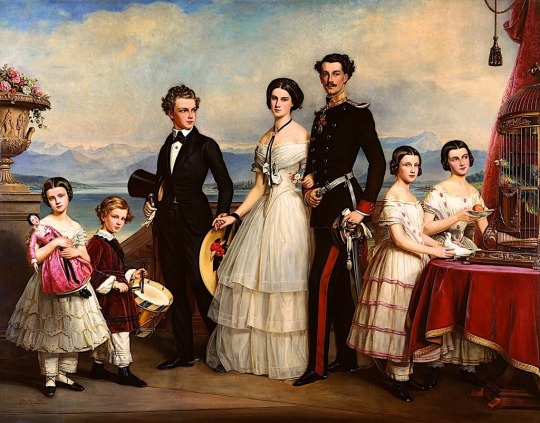
Duke Maximilian and Duchess Ludovika had a total of ten children, five girls and five boys. Their second son, Wilhelm Karl, sadly died at a month and half old, and their fourth son, Maximilian, was stillborn. The surviving eight children were (by order of birth): Ludwig Wilhelm, Helene, Elisabeth, Karl Theodor, Marie, Mathilde, Sophie and Maximilian Emanuel.

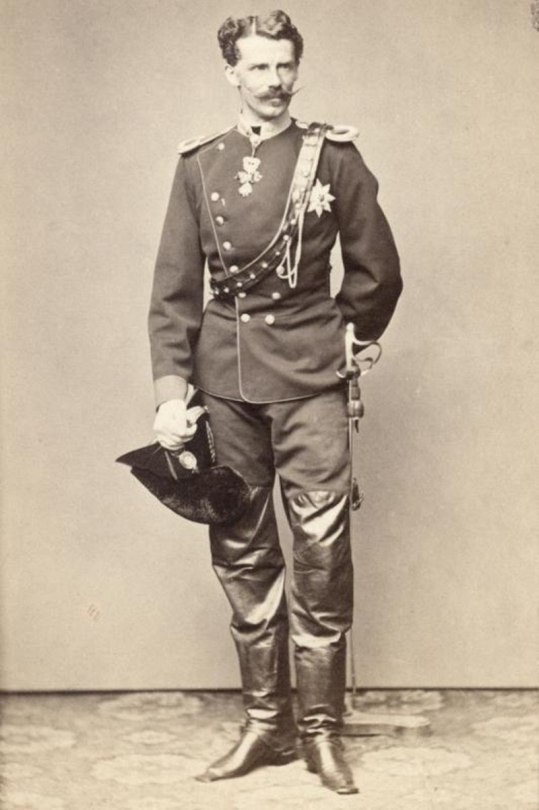
The eldest, Ludwig Wilhelm, born in 1831, was always known as “Louis” in his family. In 1858 he gave up his position as the future head of the Dukes in Bavaria branch in order to marry his mistress, former actress Henriette Mendel. He seems to have been somewhat difficult, at least judging by something Elisabeth told to her lady-in-waiting Countess Mária Festetics: “It is a good thing that Henriette is his wife, for anybody else would long since have left him, and he is happy with her.” What does this exactly mean I have no idea. Louis and Henriette had two children, Marie (born a year before her parents marriage) and Karl, who died as a baby. As was customary for Wittelsbach princes he did a military career, and in 1866 fought in the Seven Weeks War. We don’t really have much more information about him; many accounts about the Duke and his family that come after the Mayerling affair, in which his daughter Marie Larisch played a key role as the go-between Crown Prince Rudolf and Mary Vetsera, are heavily affected by the negative reputation that had befallen over her. His relationship with his sister wasn’t unaffected by this either, and he and Elisabeth became distant, though Elisabeth’s daughter Marie Valerie still wrote affectionately of her “Aunt Henriette”, so it may have been more out of a sense of awkwardness than Louis being directly blamed for the affair. He went to Elisabeth’s funeral, visibly affected by his sister’s death, and was one of the men who took her coffin to the Capuchin Crypt. A year after his wife’s death in 1891 he married actress Antonie Barth, forty years his junior. This marriage ended up in a divorce in 1913, after she had a child whom Louis claimed wasn’t his (I found some gossip articles about this on newspapers but that’s a whole rabbit hole I haven’t gone down yet). Ludwig Wilhelm died in Munich 1920, aged eighty-nine-years-old.
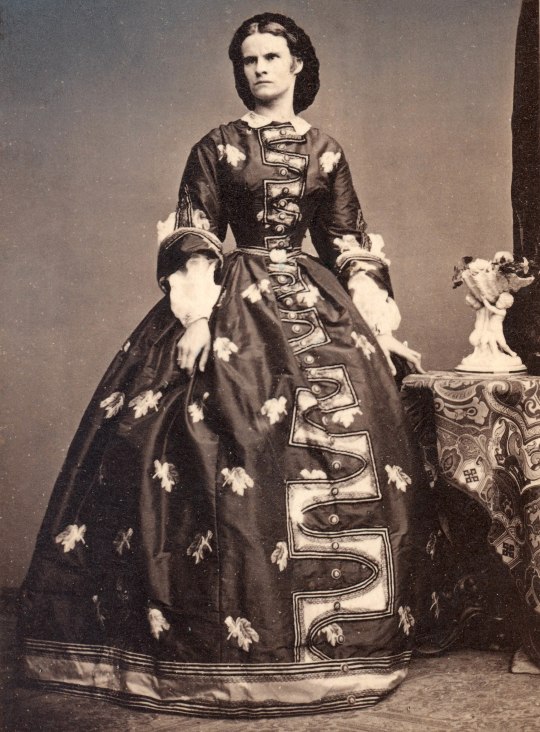

Born in 1834, the third child an eldest daughter, Helene, nicknamed “Nené” and “Lenza”, is probably the most known of Sisi’s siblings, and also the most misrepresented. She has gone down in history for being the disciplined, exemplary daughter that was groomed for years to become empress only to have “her fiancé” stolen by her younger sister. Except that none of this is true. In her old age Ludovika often complained that Helene had been a troublesome child who had caused her a lot of grievances. And it’s unlikely that Helene had ever expected, let alone been prepared, to become empress years in advance: not only there had been serious attempts to get Princess Anna of Prussia’s hand for Franz Josef in 1852 (why would they have done this if Helene was supposedly waiting in the wings to marry him?), but also when Ludovika was told that the emperor wanted to marry Sisi she became very emotional “for in her great modesty she had always doubted that the Emperor would really think in one of her daughters”.
By late 1857 Ludovika lamented that her daughter had pretty much become a spinster. But in the beginning of 1858 Helene met Maximilian, Hereditary Prince of Thurn und Taxis, and soon after he proposed. This marriage wasn’t well received by King Maximilian II, since the Taxis were subjects of the Bavarian king and therefore not equal to marry a Wittelsbach, but eventually King Max gave them the all-clear and they married. Reportedly the marriage was happy, but her husband sadly died only ten years later of an illness, and she fell into a deep grief. When Helene’s father-in-law died in 1871 she became the de facto head of the house of Thurn und Taxis until her son Maximilian reached the majority. Helene was sadly to suffer two more big blows in her life: in 1881 her daughter Elisabeth died of childbirth complications aged only 20-years-old, and in 1885 her son Maximilian died of cardiac problems aged only 24-years-old. Helene’s last years are said to have been very sad, since she never recovered from the untimely deaths of her husband and children. She died in 1890 at the age of 56, likely of cancer. At her deathbed were her two surviving children, Louise and Albert, and her sister Elisabeth.
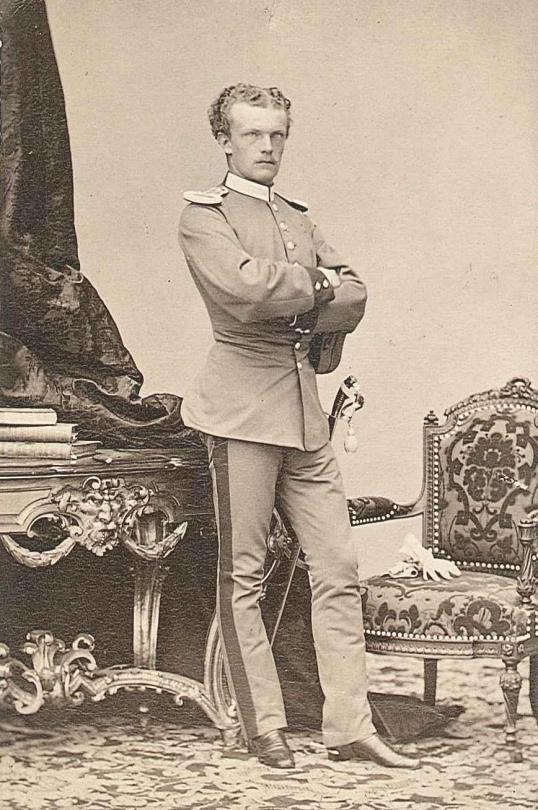
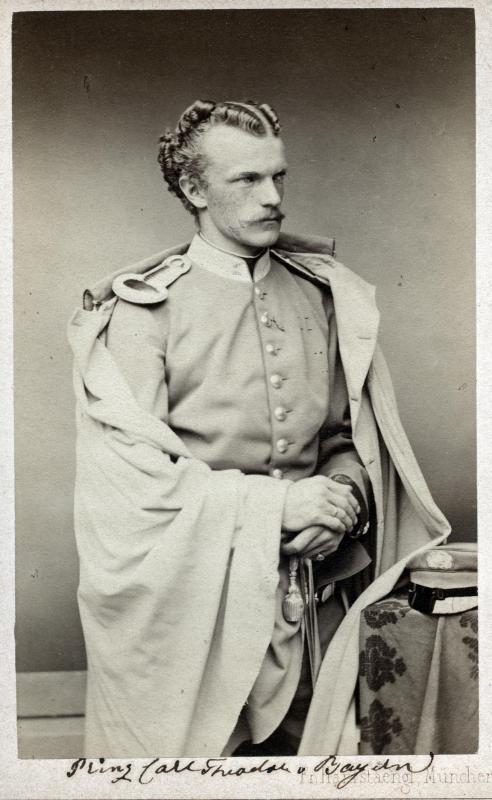
The fifth child and third son, Karl Theodor, called “Gackl” by his family, was Elisabeth’s favorite brother. He seems to have been a very charismatic man, since everyone that met him had nothing but good things to say about him. In 1865 he married his first cousin Princess Sophie of Saxony, and they had one daughter, Amalie. Sadly Sophie’s health was severely affected by childbirth, and died over a year later of influenza. Like his elder brother he also did a military career starting from a young age, and fougth in the Seven Weeks War. However, afterwards he left active service and went to the Ludwig Maximilian University of Munich, where he studied medicine. His studies were interrupted by the Franco-Prussian War, but he got his degree as a doctor in medicine, later specializing in ophtalmology. During this time Karl Theodor had remained a widower, but in 1874, seven years after his wife’s passing, he married Infanta Maria José of Portugal, daughter of the deposed King Miguel I of Portugal and seventeen years his junior. They had five children: Sophie, Elisabeth, Marie Gabrielle, Ludwig Wilhelm and Franz Josef. Gackl became a renowned oculist, and in 1895 he opened the Augenklinik Herzog Carl Theodor (Duke Carl Theodor Eye Clinic) in Munich, which exists to this day. He personally operated thousands of people, assisted by Maria José, and later also by his daughters. Karl Theodor died in 1909, a few weeks after his 70th birthday, from bronchitis.
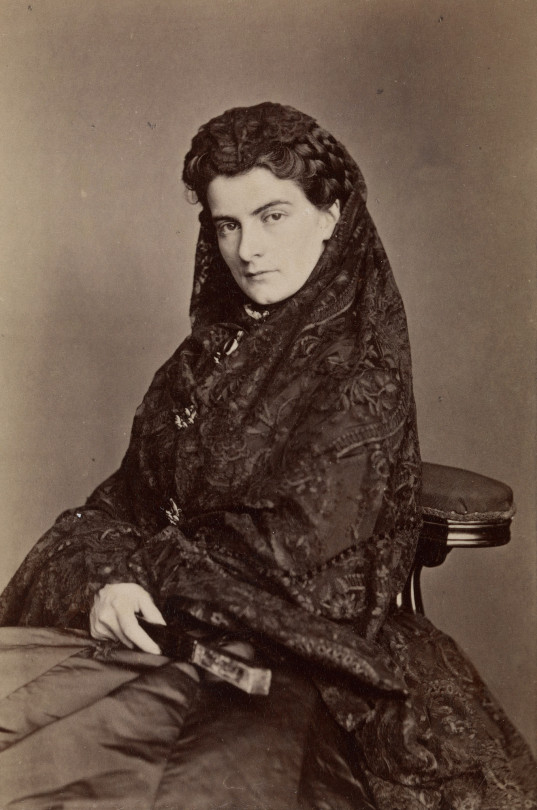

While Helene is the most known of Elisabeth’s sister solely because everyone and their moms know the (incorrect) story of her being “rejected” by FJ, the sixth child and third daughter, Marie, is the most famous sister for her own merits. She was the last Queen of the Two Sicilies as the wife of King Francesco II, and has gone down in history for leading the resistance during the Siege of Gaeta, the last stand of the Bourbon dynasty in Naples. She was only nineteen when her husband finally surrounded, and lived in exile for the rest of her life. After ten years of marriage Marie and her husband had one child, Maria Cristina, who sadly passed away while still a baby. They tried to have more children, but all her pregnancies ended up in miscarriages. She spent the rest of her life traveling; when WWI broke she settled down in Munich, where she died aged 82 in 1925.
Marie has gotten an interesting reputation: she is either known for being the brave queen who stood up next to her troops until the end, or for being a haughty woman who deeply envied her imperial sister and lived full of resentment. The first is just one, although crucial, brief moment in her life; and the second is literally just what Mária Festetics, one of Elisabeth’s ladies-in-waiting, thought of her. Once I realized how little we actually knew about Marie, how much is just hearsay and speculation, she became fascinating to me, but sadly we still don’t have a good biography about her that uses primary sources instead of relying in gossipy second hand accounts.
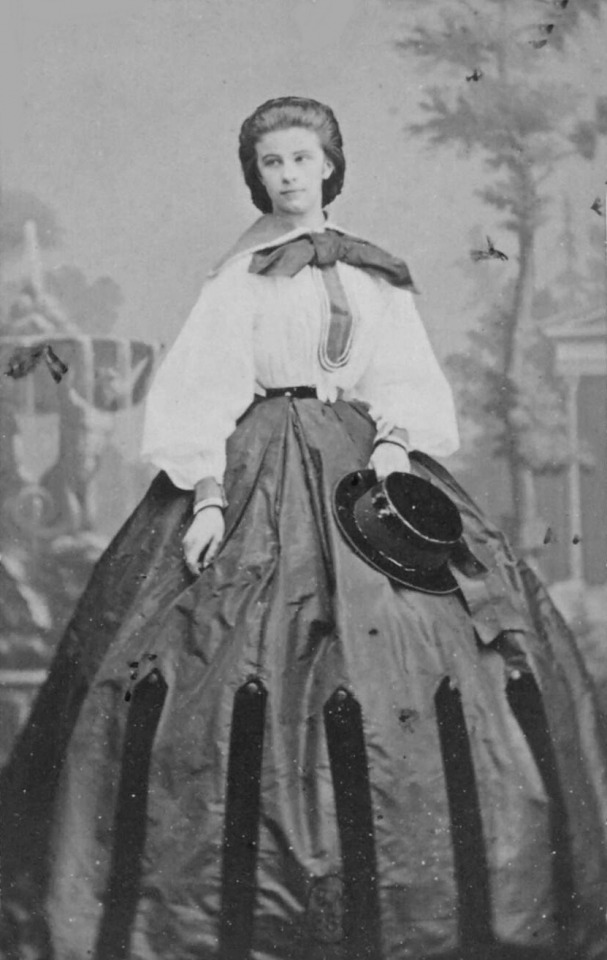

Mathilde, called “Spatz” (Sparrow), is the sister we have the least information of. She and Marie were the closest of the sisters; they were always together, and would often even dress the same (as you can see in the Stieler portrait). In 1861 Mathilde married Prince Luigi, Count of Trani, half-brother of Marie’s husband, and joined her sister in Rome, were the Bourbons in exile had settled their court. The marriage turned out to be unhappy, since her husband was an alcoholic and cheated on her, though they did had one child: Maria Teresa, called “Mädi”, born in 1867. Mathilde and Luigi separated eventually, though she did went to his aid and nurse him when he was sick. But the person she dedicated her life was her daughter, who for many years suffered from poor health (likely sclerosis); Mathilde took care of Mädi until her death, aged only 42. She spent the last years of her life with her sister Marie, and died only months after her, in 1925.
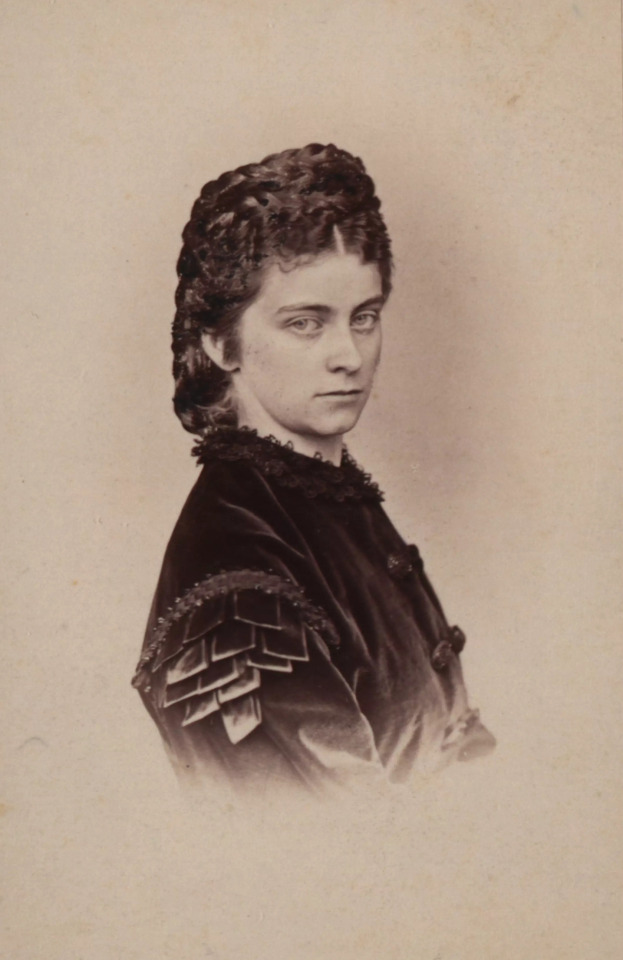
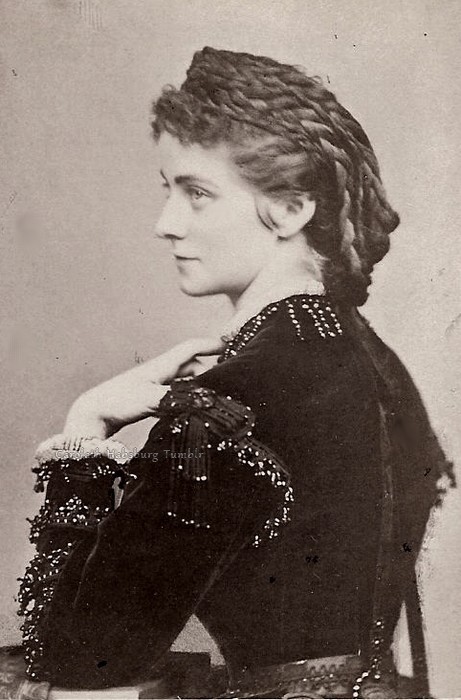
The youngest daughter, Sophie, born in 1847, is probably the most “romantic” of the Wittelsbach sisters. Just like Helene she has gone down in history for being a “rejected bride”, though in her case, it’s actually true. She was briefly engaged to her cousin Ludwig II of Bavaria, and it was an absolute disaster: he had no interest in marriage (not really that surprising when you consider that he was gay) and often publicly snubbed Sophie; she in turn was absolutely miserable because she felt he was playing with her. Ludwig kept postponing the wedding until Sophie’s father, Duke Max, send him an ultimatum, to which the king responded by just canceling it. As if these months hadn’t been stressful enough for Sophie, during this time she also had an affair with Edgar Hanfstaengl, the son of the court photographer. I don’t really know much about this liaison, only that she was aided by two ladies-in-waiting in order to meet him in private and that some love letters she wrote to him have survived. But whatever the extent of her feelings, the relationship could never become serious, and one year later she married Prince Ferdinand of Orléans, Duke of Alençon, a grandson of King Louis Philippe I of the French. I don’t know if this marriage was ever a love match or if Sophie simply wanted to settle down for good after all her failed romantic experiences; whatever the case they did have two children, Louise and Emmanuel. The Orléans had been living in exile in England since the deposition of Louis Philippe, and only after the fall of the Second French Empire in 1872 were they allowed to return to France. This probably improved Sophie’s mood, since she had suffered from depression since her children’s birth, and the English weather didn’t make her feel better.
After the death of her former fiancé Ludwig II in 1886, Sophie fell ill and on advice of her brother Gackl she searched for a treatment in Munich under a Dr Glaser. But while he treated her she fell in love with her doctor, who was also married with children. This time Sophie didn’t want to give up her enamored, and did something unthinkable for a woman of her status in the 19th century: she sought for a divorce from Ferdinand. Sadly things didn’t work out for her, because her husband, on the advice of her brother Karl Theodor, retaliated by having Sophie interned in a mental clinic for “moral insanity”, where she suffered the appalling “treatments” for mental illnesses of the time. After seven months she was considered cured, and allowed to leave the institution. She never again tried to divorce.
Sophie dedicated the last years of her life to charity work. In 1897 she was one of the organizers of the Bazar de la Charité, an annual charity event held in Paris since 1885, and was in the place when an accident set it on fire, taking the lives of 126 victims. She was one of the victims of the fire, and although she had the chance to leave she refused she refused to abandon the Bazar until everyone else was out, guiding and helping people to find the exist until her last moments. She had been fifty-years-old.


Lastly the youngest child Maximilian Emanuel, nicknamed “Mapperl”, is the brother we know the least about. Born in 1849, he was only two years and a half younger than his sister Sophie, whom he was the closest to: they were often referred as “die Kleinen” (the little ones). As his eldest brothers he did a military career, and fought both in the Seven Weeks War (aged only sixteen!) and in the Franco-Prussian War. At Sophie’s wedding he met and fell for a cousin of the groom, Princess Amalie of Saxe-Coburg and Gotha, which would have been great… if she hadn’t been already engaged to Prince Leopold of Bavaria. Here’s when things get a bit messy: according Briggitte Hamann, Elisabeth found out about the situation and decided to step in and free Mapperl’s beloved… by introducing her daughter Gisela to Leopold. Which is. Hmmm. A questionable thing to do. However, other authors claim that Elisabeth actually had nothing to do with that, specially considering that Mapperl’s wedding took place three years after Leopold and Gisela got engaged - if the goal was to make Amalie available, he definitely took his sweet time to make his move. One day I’ll look deep into it because I’m genuinely curious as to which is the truth; whatever the case, both couples had happy marriages, so good for them. Max Emanuel and Amalie had three sons: Siegfried, Christoph and Luitpold. Sadly Max Emanuel died quite unexpectedly in 1893 from an ulcer, aged only 43-years-old.
Again, this is only an introduction to the siblings, there’s far more information out there that I could possibly put in a single post. Thank you for your question! The Dukes and Duchesses in Bavaria are really interesting an I think they deserve the spotlight as much as their imperial sister.
#a lot of this i wrote from memory + copying my own previous posts + checking dates and names on wikipedia#so please forgive my lack of sources and sorry if there are mistakes!#house of wittelsbach#duke ludwig wilhelm in bavaria#helene in bavaria hereditary princess of thurn und taxis#karl theodor duke in bavaria#queen marie sophie of the two sicilies#mathilde in bavaria countess of trani#sophie in bavaria duchesse d'aleçon#duke maximilian emanuel in bavaria#asks
32 notes
·
View notes
Note
Hi!
If you don’t mind me asking, which parent do you think Sisi and each of her siblings looked more like?
I think Helene looked like Max, Sisi, Maria Sophie, Mathilde and Sophie Charlotte looked like Ludovika and Karl Theodor, Ludwig Wilhelm anc Maximilian Emmanuel looked like a mix of their parents.
Hi! No I don't mind at all, I like this type of questions since I usually don't talk much about these kind of things.
Personally I agree on you with Elisabeth and Mathilde, they both looked a lot like their mom:
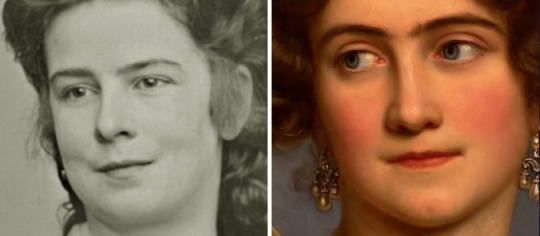
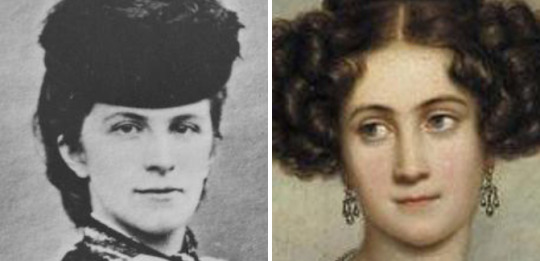
To me Marie resembled a bit more to her dad, specially the shape of her face (notice how they both had the same parted chin)
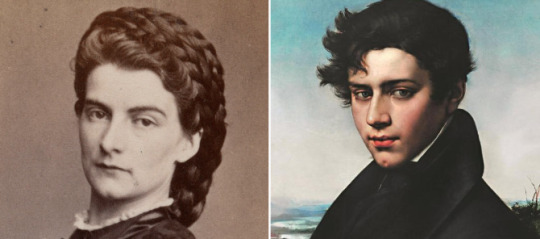
I don't think Sophie resembled particularly to one of her parents, tho as an older woman I think she looked a lot like her grandmother Queen Caroline.
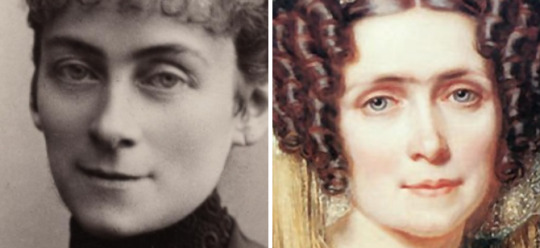
With Helene I can't settle, to be honest. Here is a comparison with her parents' portraits. Maybe she also looked more like a grandparent?

As for the guys: I also think they looked like a mix of their parents, tho as he grew older Ludwig Wilhelm resembled more to his dad.



In general you can see the family resemblance (remember Ludovika and Max were cousins lol) in all the kids, tho I wish we had more portraits, or better, actual pictures of their parents in their youth to compare them better.
#i tried to use different pics of max and ludovika but at the end i gave up jhjhjgk#asks#ludovika of bavaria duchess in bavaria#empress elisabeth of austria#queen marie sophie of the two sicilies#mathilde in bavaria countess of trani#sophie in bavaria duchesse d'aleçon#helene in bavaria hereditary princess of thurn und taxis#duke maximilian emanuel in bavaria#duke ludwig wilhelm in bavaria#karl theodor duke in bavaria#queen caroline of bavaria#maximilian joseph duke in bavaria
12 notes
·
View notes
Note
Thanks for answering. Part of mixing in was also that Comte de Paris was head of Orleanist hopes and bigger figure in French politics of that era as opposed to Sophie's Ferdinand. And Gaston was closer to Mathilde's age and a bit more dynamic and handsomer than Ferdinand and it's TV. Plus having a Duchess of Orleans added to the existing Queen of Naples and Empress of Austria puts more pressure for Sophie and this TV version Ludovika is rather ambitious for her daughters' marriages.
Honestly I like Mathilde so that's why I want her to properly appear in any series about her sister/s, but the truth is that she isn't TV material. She married the loser little brother of her favorite sister's husband, had one child with him and then they separated. And that's about it. Mathilde was the quite daughter, and other than the alleged affair and illegitimate child she supposedly had (affair in which I believe even less than Marie's), there isn't anything particularly exciting about her life to be made into a series drama, even as a supporting plotline.
So I understand where you're coming from, and I agree that it does make for better TV. In fact for the little we know about her marriage I believe her family made a mistake in marrying her to Luigi. So any AU of "Mathilde marries a guy who wasn't a broke loser who didn't love her" is welcome.
2 notes
·
View notes
Note
In my opinion, Sophie Charlotte and Mathilde were the prettiest wittelsbach sisters. What do you think? (Btw they are all gorgeous but something about SC and Mathilde makes me smile)
They were indeed gorgeous! I think that out of all the sisters they were the ones that had the "kindest" faces, specially Sophie, who usually smiles a bit in her pictures:


Personally I find Marie the prettiest, although she had a more "sharp"? sort of face that made her look a bit "crossed" in some pictures (like the second one). I don't think that's a bad thing, she had a great serious face imo:
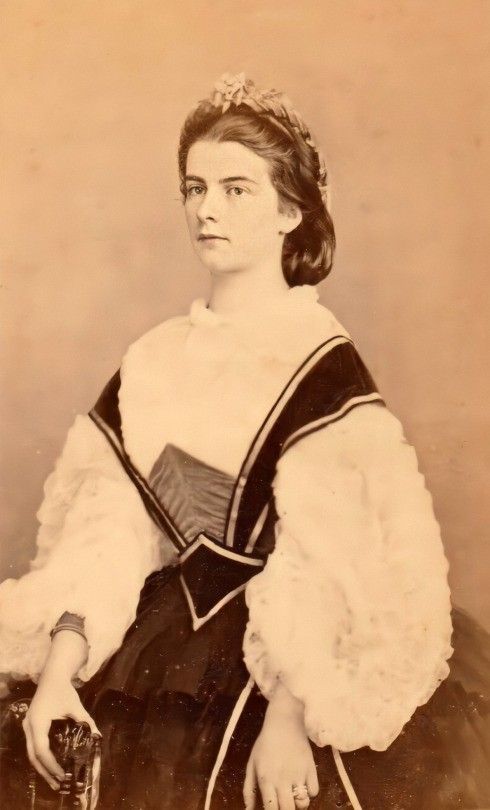
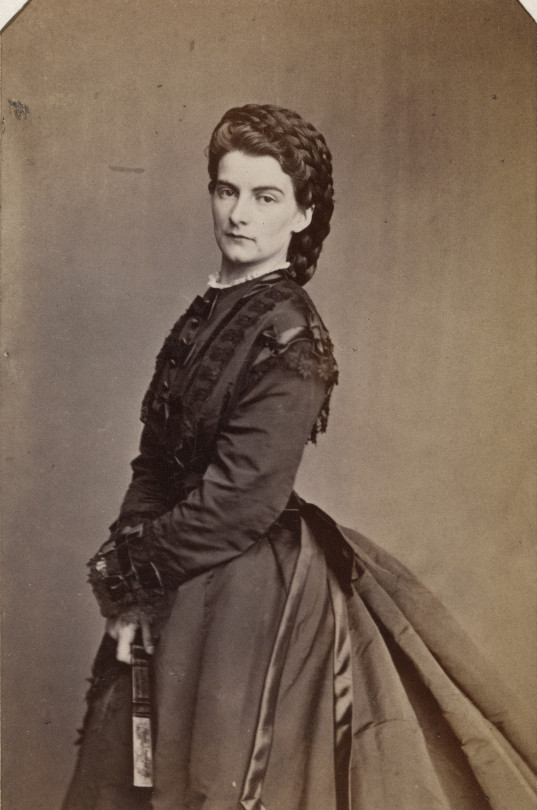
But as always, beauty is in the eye of the holder! These are just my opinions.
#sophie in bavaria duchesse d'aleçon#mathilde in bavaria countess of trani#queen marie sophie of the two sicilies#house of wittelsbach#asks
15 notes
·
View notes
Note
Hi! could you pls tell me more about Mathilde in Bavaria Countess of Trani? I feel like from all of Elisabeth's sisters, she's the one I know the least about and I'm not sure where to find detailed information. I'd love to know about her life, what her marriage was like and her relationship with her birth family and daughter (or daughters, if the claim of her alleged illegitimate child is true?) Also did she play any role/have any allegiance during ww1?
Hello! She is indeed the least known of the sisters, perhaps because she had an overall uneventful life. I've talked about her on this ask, and sadly I don't really have anything more substantial to add. What I didn't mention in it, however, was the alleged illegitimate daughter, since I wanted to elaborate it properly. So let's do that!
Allegedly, during her first years of marriage Mathilde had an affair with Spanish diplomatic Salvador Bermúdez de Castro, Duke of Ripalda, which resulted in the birth of a daughter, María Salvadora Bermúdez de Castro, born in 1864 in Villa Farnesina, in Rome. The girl was almost immediately sent to England, were she was raised by her paternal family, and later on adopted by her father. She never had any contact with her mother again.
Mathilde isn't the only one with an alleged out of wedlock child: her elder sister Marie also was rumored to have become pregnant by a lover and give birth to a girl in 1862. But here's the thing: in Marie's case, these rumors were contemporary. She suddenly left Rome for Bavaria in June of 1862, officially because she was ill, and in October she entered the convent of St. Ursula in Augsburg, which she only left in January (!) of the next year. And while I still haven't found convincing evidence of Marie actually having a child during her stay at the convent, is completely understandable that the rumor spread like wildfire: newspapers reported that she was having some sort of marital crisis at the beginning of 1862, then she suddenly left her husband because of an unclear illness, and then nobody physically saw her for MONTHS. She finally returned Rome in April 1863, ten months after she left. And if you fall from the face of Earth for ten months OF COURSE people is going to think you were pregnant (specially if these people want to ruin your reputation after you became the symbol of the Bourbon cause).
But as far as I'm aware there is nothing even remotely similar in Mathilde's case. So far I haven't been able to find a "window" in which you can fit a pregnancy, nor any rumors about her around 1864. In fact, how could she possibly hide a pregnancy and have a secret child in ROME, right under the noses of her husband and in-laws and even the Pope? It just doesn't make sense. I still don't know where the story of her having a daughter in Villa Farnesina originated, but I do know that it wasn't in the 19th century.
That being said, María Salvadora did exist and was Bermúdez de Castro's illegitimate daughter, that much is true. Upon his death in 1883 she was the sole heiress of his money and titles. His will was actually reported in newspapers, since he owned a fortune. Here is an article from the Italian newspaper Fanfulla, from June 16 of 1883 (machine translation):
THE RIPALDA WILL Yesterday, the will of the Duke of Ripalda was found in the Farnesina Palace. It was opened by the Spanish consul in Rome, Juan Rodriguez Rubi, in the presence of the Italian judicial authority, a nephew of the deceased duke, who came three days ago from Barcelona, and other witnesses. The will is made by public deed in Madrid, now four years old; a codicil made in Rome last year is added. The fortune left by the Duke of Ripalda is calculated at 5 million Italian lire, valuing the Farnesina at two million, and counting the 750,000 lire that the deceased still owed the Italian government for the expropriation of part of the garden of the Farnesina, due to the work on the Tiber. This sum may even increase, as a dispute before the Italian courts has begun. The late duke has appointed as his universal heir one of his natural daughters recognised and legitimised by will, according to Spanish law, Dona Maria Salvadora Bermúdez de Castro, a nineteen-year-old girl, who is currently being educated in an institution in Cologne. Some portraits of the young heiress found among the duke's papers depict her with an uncommon aloofness. The duke, in his will, conceals, as is natural, the mother's name, but says that his heiress is hija de ilustre y hermosa señora [daughter of an illustrated and beautiful lady]. The executors of the will are the Duke of Vista Hermosa senator and Grandee of Spain, Don Francisco Cardenas ex-ambassador to the Holy See, Augusto Conta minister in Vienna, and the ambassador of Spain to the Holy See, who would have been in caries at the time of the testator's death. As guardian of the universal heir, the duke appointed Dona Incarnacion O'Lavolor de Bermudez de Castro, wife of his elder brother, living in Madrid. The will also mentions many legacies, gifts and pensions to relatives, old servants and the poor in Rome and Madrid. He also leaves to the ex-king of Naples a large painting by Raphael, currently in the National Gallery in London, valued at one million, and another painting by Titian, placed in the great hall of the Farnesina, plus a legacy of 50,000 lire for the ex-king and another of the same amount for the ex-queen Maria Sofia! The deceased had the name Salvador Bermúdez de Castro, marchase of Lema, Duke of Ripalda, prince of Santa Lucia. The latter title was not recognised in Spain, since the title of prince can only be borne by persons belonging to the royal family. The title of Marquis of Lema will go to the nephew, the son of Dona Incarnacion; the other two to the universal heir, who will thus add the princely and ducal crowns to a fortune of 5 million. If, however, this is not possible, the two titles will be carried by the guardian. The will closes with a sentence that shows the deceased's foresight and finesse. In it, it is said that if, as a result of trials, his daughter were to lose everything he had left her in his will, his fortune, instead of coming by right into the hands of his relatives, should all be distributed to the poor. The Duke of Ripalda shall have his grave at Campo Verano, which he prescribes modest, and on which shall be written only his name.
So in 1883 the only piece of information you could find about Maria Salvadora's mother was "illustrated and beautiful lady". I'm not aware if this kind of phrasing shows a particular attachment towards the girl's mother or if it was convencional, but in any case nothing really points at Mathilde.
María Salvadora moved to Spain some time later and in 1890 married Álvaro Pérez de Barradas Fernández de Córdova, Marquis Peñaflor. The marriage remained childless. I couldn't find much information about her, only that she wrote a book about the life of Sancha Alfonsa de León. She died in 1944 in Madrid, at the age of 80.
Do I believe that Mathilde was her mother? So far I'm not convinced. I need something that tangibly connects Mathilde with Bermúdez de Castro + a window for a possible pregnancy. Otherwise, you literally only have a story that did not even exist until some years ago. In fact, in the 1860s Marie was the one rumored to have been too close to the Spanish diplomatic, not her younger sister. Do with that what you will.
As for the last part of your question: I don't know if she did something during WWI, but honestly I haven't looked into it either. If I found something about it I'll share it!
Thank you for your question and sorry that I couldn't tell you more!
#mathilde in bavaria countess of trani#queen marie sophie of the two sicilies#salvador bermúdez de castro duke of ripalda#asks
5 notes
·
View notes
Note
Hello! I was wondering if you could tell me more on Mathilde Ludovika in Bavaria? From all of Elisabeth's sisters, she's the one I know the least about, and it's frustratingly hard to find (translated) information on her online or in local stories/libraries where I stay 😭.
I'd love to know more on her childhood, her marriage (did she really have an illegitimate child? the idea that Marie had one seems doubtful to me but idk much about Mathilde so I can't say) and her widowhood. The fact that both she and Marie lived through WW1 is insane, I know Marie supported Germany and I'm guessing Mathilde did the same?
Also the fact that she outlived all her siblings 💔
Hello! Sorry for the delay. I got a very similar ask about Mathilde which I answered here!
And yes, I always thought it was a bit emotional that she died so soon after Marie, who was practically her twin. It must have been weird for her to live in a world without her sister, even if only for a few months.
3 notes
·
View notes
Note
Suppose it's all in the eye of the beholder, but was Duchess Mathilde in Bavaria a.k.a. Spatz consider a beauty like her sisters or not? Can't really from paintings or photographs of her.
According to some contemporary accounts she was considered pretty, though not as much as her sisters Elisabeth and Marie. Here are some I could find:
Crown Princess Victoria of Prussia, who visited Rome in 1862, to her mother Queen Victoria:
The Count of Trani is the nicest and his wife [Mathilde] very pretty and showy-looking though not a real beauty. She must be very like her sister the Empress of Austria—though of course not to be compared to her in beauty.
British poet Alfred Austin, who visited Rome in 1865, in his memoirs:
But I remember we found ourselves at the Carnival, then still held in the Corso in the old traditional manner, in the next balcony to the beautiful ex-Queen of Naples, whom we often met walking, betimes and alone, on the Pincian, and her almost equally lovely sister, the Countess Trani.
Philip de László, who painted Mathilde's portrait in 1900:
In her general appearance, her ways of moving, her attitude while sitting, even in her coiffure, the Countess was the image of her sister, Elisabeth Empress of Austria, but without the Empress’s beautiful eyes and lacking her feminine charm.
Queen Marie of Romania, sister-in-law of Mathilde's daughter Mädi, in her memoirs:
Countess Trani had the same wonderful figure as the Empress, tall, upright and incredibly slim; she was, however, much less beautiful.
I honestly don't get why people thought she was less pretty than her sisters (specially given how much she looked like Elisabeth), but she was considered good looking nonetheless.
2 notes
·
View notes
Text

The Ducal Wittelsbach family and their relatives, early 1890s. From left to right, standing: Karl Theodor, Duke in Bavaria, Duchess Elisabeth in Bavaria, Archduchess Elisabeth Amalie of Austria, Duchess Sophie Adelheid in Bavaria, Archduchess Maria Annunziata of Austria, Princess Maria Immacolata of Bourbon-Two Sicilies, Duchess Marie Gabrielle in Bavaria.
Sitting: Archduchess Maria Teresa of Austria (née Infanta of Portugal), King Francesco II of the Two Sicilies, Queen Marie Sophie of the Two Sicilies (née Duchess in Bavaria)
Via As Infantas de Bragança e a Sua Descendência - História das Filhas de D. Miguel by Dativo Salvia Ocaña
#look what i found completely by chance! the quality isn't very good because it's from the book's preview#francesco died in december of 1894 so the picture is from before that date#but definetly 1890s because. puff sleeves#(also the author misidentifies maria teresa as her sister maria josé and maria annunziata as mathilde countess of trani)#karl theodor duke in bavaria#queen elisabeth of the belgians#elisabeth amalie of austria princess of liechtenstein#sophie in bavaria countess of toerring jettenbach#archduchess maria annunziata of austria#maria immacolata of bourbon-two sicilies princess of saxony#marie gabrielle in bavaria princess of bavaria#maria teresa of braganza archduchess of austria#francesco ii of the two sicilies#queen marie sophie of the two sicilies#house of wittelsbach#house of bourbon two sicilies#house of braganza
28 notes
·
View notes
Text

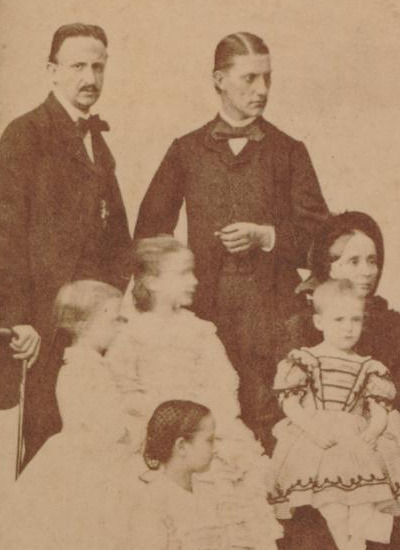
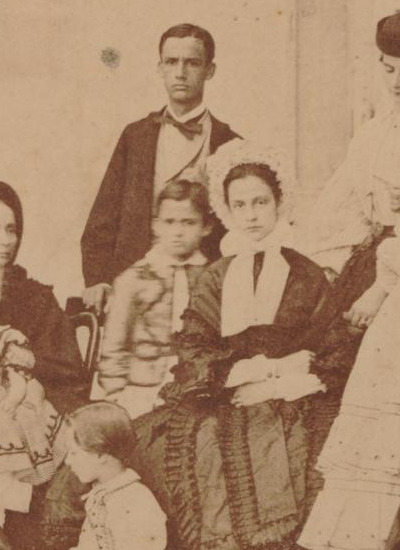


The Royal Family of Naples in exile, Rome, circa 1861
Via The British Museum
#so I was going to tag everyone but bourbons all have the same face and I can't tell francesco's brothers apart bye#also is kinda impossible to identify the children anyways#francesco ii of the two sicilies#queen marie sophie of the two sicilies#mathilde in bavaria countess of trani#maria annunziata of bourbon-two sicilies archduchess of austria#queen maria theresa of the two sicilies#and many more!#house of bourbon two sicilies
55 notes
·
View notes